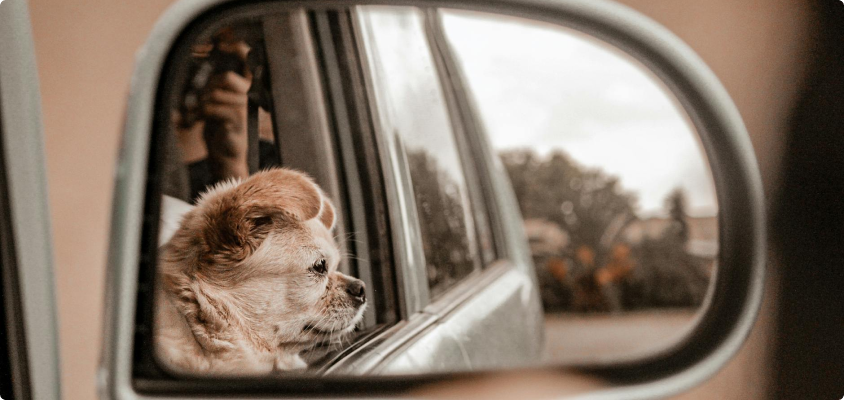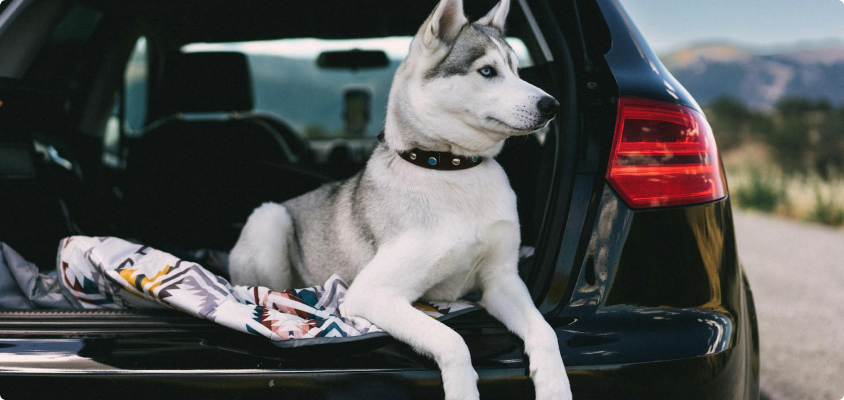
Traveling with pets can be an exciting experience, but it also requires thorough preparation to ensure your furry companion stays safe, comfortable, and happy throughout the journey. Whether you’re planning a road trip, a flight, or a vacation with your pet, proper planning is key to a smooth experience. Here’s a complete guide on how to keep your pet safe and happy during travel.
1. Plan Ahead for Pet-Friendly Destinations
Before setting off on your trip, research pet-friendly destinations and accommodations. Many hotels, resorts, and rental homes cater to pets, offering amenities such as dog parks, pet beds, and designated walking areas. Check pet policies, including any fees or restrictions, to avoid surprises.
For outdoor adventures, look for pet-friendly hiking trails, parks, and beaches. Always ensure that pets are allowed in public spaces to prevent any issues when you arrive.
2. Visit the Vet Before Traveling
A visit to the vet is essential before traveling with your pet. Schedule a check-up to ensure they’re healthy enough for travel. If you’re flying or going on a long trip, you may need to provide a health certificate to prove that your pet is up-to-date on vaccinations and free from contagious diseases.
Discuss any health concerns with your vet, such as motion sickness, anxiety, or specific travel-related risks, and ask for recommendations or medications that may help. Flea, tick, and heartworm preventatives are also important if you’re traveling to areas where these pests are common.
3. Choose the Right Travel Carrier or Crate
A secure, comfortable carrier or crate is essential for traveling with pets, whether by car, plane, or public transportation. The carrier should be large enough for your pet to stand, turn around, and lie down comfortably. Look for carriers with proper ventilation, soft bedding, and secure closures to keep your pet safe during the journey.
For air travel, check with your airline regarding pet carrier size and weight restrictions. Airlines typically require carriers that fit under the seat for in-cabin pets, while larger pets may need to travel in the cargo hold.
When traveling by car, ensure that the carrier or crate is properly secured with seat belts to prevent it from sliding or tipping during sudden stops. Never allow your pet to roam freely in the car, as this can be dangerous for both you and your pet.
4. Pack a Travel Kit for Your Pet
Just like humans, pets need essential items when they travel. Pack a pet travel kit that includes:
- Food and treats: Bring enough food for the duration of the trip, as well as a few treats to reward good behavior.
- Water and bowls: Collapsible water and food bowls are space-saving and easy to use.
- Leash and harness: Keep your pet safely leashed during rest stops or while exploring new places.
- Waste bags and litter supplies: Bring plenty of waste bags for dogs, and if traveling with a cat, don’t forget a portable litter box and litter.
- Toys and blankets: Familiar toys and blankets provide comfort and can help reduce anxiety in unfamiliar environments.
- Grooming supplies: A brush or comb helps to keep your pet’s fur tidy, and grooming wipes can come in handy for quick cleanups.
- Medications: If your pet requires any medications, pack them in your travel kit along with their dosage instructions.
Having these essentials on hand will make your trip more enjoyable for both you and your pet.
5. Keep Your Pet Calm During the Journey

Traveling can be stressful for pets, especially if they’re not used to being in new environments or spending long periods in a carrier. To keep your pet calm:
- Create a cozy environment: Place a favorite blanket, bed, or a familiar-smelling item in their carrier to make them feel at ease.
- Take practice trips: If your pet is not accustomed to travel, take them on short car rides or practice trips in the carrier before embarking on a longer journey.
- Stay calm and positive: Pets pick up on their owner’s emotions, so staying calm and speaking in a soothing tone can help your pet feel more secure.
If your pet experiences anxiety or motion sickness, consult your vet about calming aids or medications, such as pheromone sprays, calming collars, or anti-nausea remedies.
6. Ensure Safety in the Car
If you’re traveling by car, there are specific safety measures to keep in mind:
- Use a seatbelt harness: For pets that aren’t in a crate, a seatbelt harness is a great option to keep them secure and prevent distractions while driving.
- Never leave your pet alone in a parked car: Even on mild days, the temperature inside a car can rise dangerously high in just minutes, leading to heatstroke or worse. If you need to stop, take your pet with you or ensure someone stays in the car with the air conditioning on.
- Take regular breaks: During long road trips, stop every couple of hours to give your pet a chance to stretch, hydrate, and relieve themselves. Many rest areas have designated pet-friendly zones where you can walk your dog safely.
7. Prepare for Air Travel with Pets
Air travel with pets requires additional planning. If you’re flying, follow these tips:
- Book in advance: Most airlines limit the number of pets allowed in the cabin, so book your pet’s spot as early as possible. Make sure you’re aware of the airline’s pet travel policies, including breed and size restrictions.
- Check cabin or cargo requirements: Smaller pets can often fly in the cabin with you, provided their carrier fits under the seat. Larger pets may need to travel in the cargo hold, which has different requirements.
- Acclimate your pet to the carrier: Before the flight, let your pet get used to the carrier by placing them in it for short periods. Reward them with treats to create positive associations.
- Arrive early at the airport: Arriving early allows time for you and your pet to check in, pass through security, and get settled without rushing.
Remember to bring your pet’s travel documents, such as health certificates and vaccination records, if required.
8. Stay Safe in Hotels and Accommodations
When staying at pet-friendly accommodations, follow these tips to keep your pet comfortable and avoid potential issues:
- Check the room for hazards: Upon arrival, check the room for any hazards like exposed wires, small objects, or chemicals that your pet might get into.
- Keep your pet secure: Use a crate or carrier when you’re not in the room to prevent your pet from causing damage or slipping out when housekeeping enters.
- Respect hotel rules: Always adhere to the hotel’s pet policies, including areas where pets are allowed and cleaning up after them.
Bring along your pet’s bed or blanket to make them feel more at home in an unfamiliar environment.
9. Ensure Proper Identification and Microchipping
Before traveling, double-check that your pet has proper identification. Make sure their collar has an updated ID tag with your contact information. Additionally, consider microchipping your pet if they aren’t already chipped. Microchips are a reliable form of identification that can help reunite you with your pet if they become lost.
It’s also a good idea to carry a recent photo of your pet with you, which can be helpful in case they go missing during the trip.
10. Know the Local Pet Laws and Regulations
Every destination may have different laws regarding pets. Be sure to research local regulations before you travel, especially if you’re going abroad. Some countries require specific vaccinations or health certificates for pet entry, while others may have quarantine regulations.
Understanding these requirements ahead of time will prevent any issues when crossing borders or checking into accommodations.
Conclusion
Traveling with your pet can be a rewarding experience, but it requires careful planning to ensure their safety and happiness. By following these tips—choosing the right carrier, packing a travel kit, keeping your pet calm, and ensuring they’re comfortable in new environments—you can enjoy a stress-free trip with your beloved companion. Safe travels!